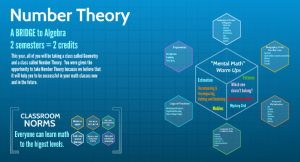Students come back to school in five days. And that’s a day after teachers report for the year.
This is my 10th first day of school and I still have a “How will I combat first period lateness” crisis. If anyone has any ideas- I am open.
I am making a commitment RIGHT NOW to blogging more. Blogging will serve as my co teacher, my student teacher. For the first two years of teaching, I was in the ninth grade initiative where the 300 students had either myself or Danielle and we would talk through and plan everything together every afternoon. Then, we would have phone calls every night and a pow wow every morning in the copy center. The next two years I taught Geometry with Erica. Again, we planned and debriefed and scoped and sequenced every day. E-mails late at night and early in the morning and on the weekends.
Then, for four years I was a mentor in the UTR/MASTER program through New Visions and Hunter. Being a mentor was the best MENTORING I ever received. The four young women (May, Megha, Sonia, and Evelyn) who I had the privilege to work with were strong and inquisitive and pushed me to re-examine all of my “ways.” When they asked me why I did something a certain way, I would try to articulate why it made sense to me- but what I found was that some of my practices didn’t make sense to me and I had just never thought about them. They opened my eyes to new methods and ways of organizing both the content and the classroom materials.
Last year, I didn’t have an official mentee. I was teaching classes that no one else was (Statistics and Numeracy) and found myself bouncing around from one idea to the next without taking time to reflect on what was working and why was I doing what I was doing. This was especially true in my ninth grade Numeracy course where I struggled to balance skill development and engagement. I found a good stride in February through the use of Interactive Notebooks. I really liked how it organized the flow of the class (both for the students and for myself) and love that since I kept one updated myself, that I have a scrapbook of the last third of last year.
Each day, I would end class with an individual exit ticket to serve as a check in of the skill we had been working on. Then, I would give them feedback on those- asking them to push their thinking further either because I had identified a misconception or because I wanted to push their thinking further.
I would put these exit tickets in their folders and when they came in the room each day they were prompted to gather their folder and notebook, take out the exit ticket from the day before and write in their notebooks using the prompts:
“I am good at _______”
“I need to work on ______”
Here I am now looking for… begging for new prompts!
My goal is to have students look, really LOOK at and interact with the exit ticket from the day before and my written feedback (I don’t give checks/check plusses or a numerical scale) and reflect on the last day’s lesson so that they are primed for that day’s work, which I planned as I myself reflected on the work they did on the exit tickets.
Many students wrote the same sentences daily for their do now, something to the effect of, “I am good at adding. I need to work on finishing my work.” This year, whatever the prompt is, if I want them to LOOK at the exit ticket, I must make that more explicit.
Here is an example: “I answered it all. I need to write neater.”

Another issue is that they struggled with the vocabulary to describe what they were “good” at and what they needed to work on, so the beginning of class became a vocabulary review time where they would describe what they were good at and ask me to name it- but that led to opportunities for a class discussion and vocabulary review session- which was cool with me.
Even though this prompt was not getting the results I waned, I stuck with it because I was focusing more on their feedback on the exit tickets than their responses to the feedback- I need to close the feedback LOOP.
One thing I loved and will keep with my exit ticket routine was a self-evaluation of meeting classroom norms for the day. I LOVED how this student said they had brought a pencil, realized that they had borrowed one, and then erased their circle.

In conclusion:
I am good at looking at exit tickets on a daily basis and giving them daily feedback.
I need to work on finding ways to make the feedback I give them meaningful and finding evidence of them making meaning of the feedback.
In future posts- I will also include the student exit tickets that correspond to their prompt responses. They were put in paper recycling last spring.













